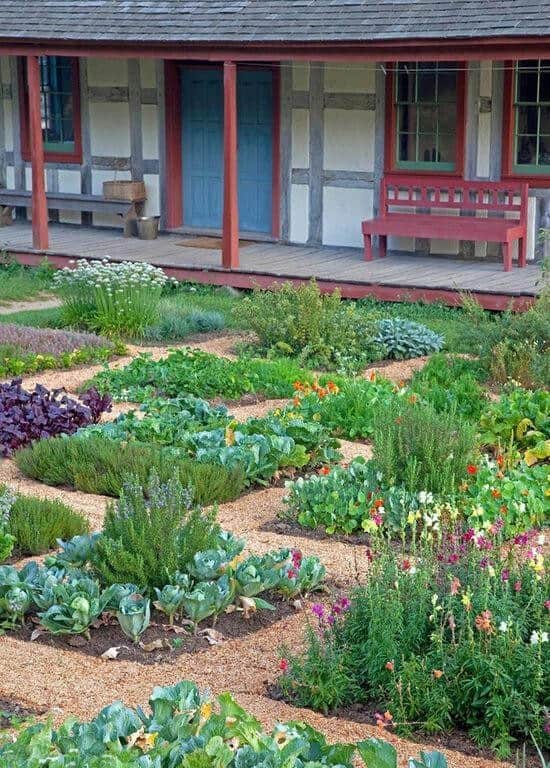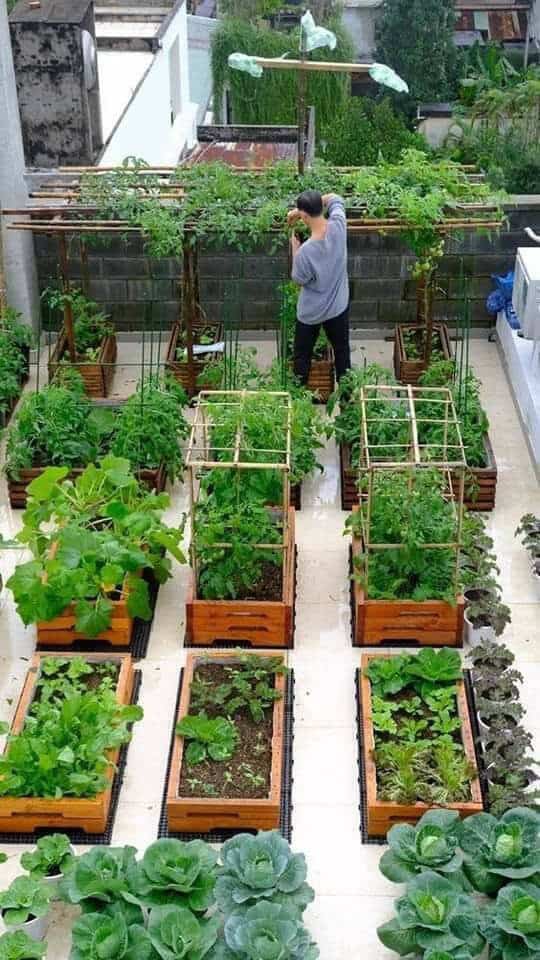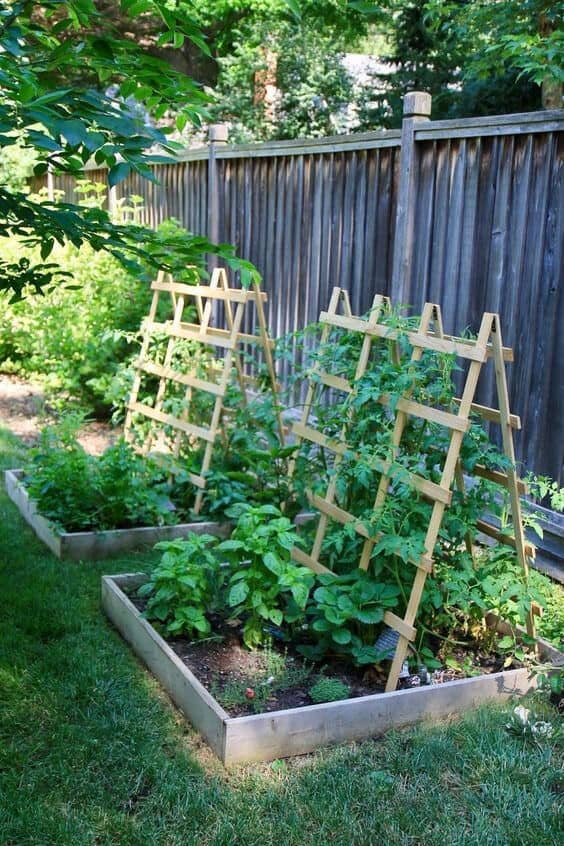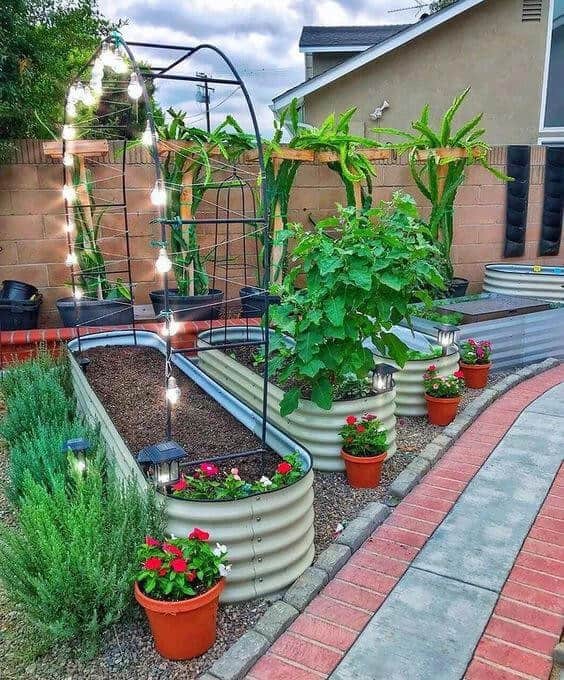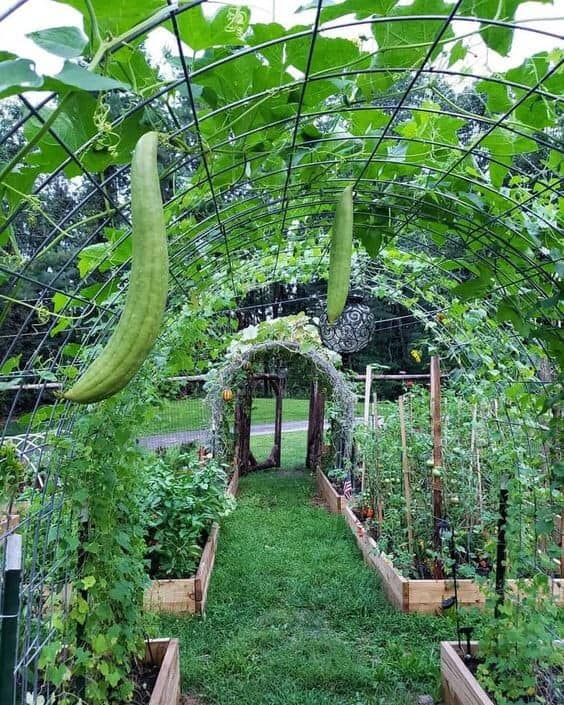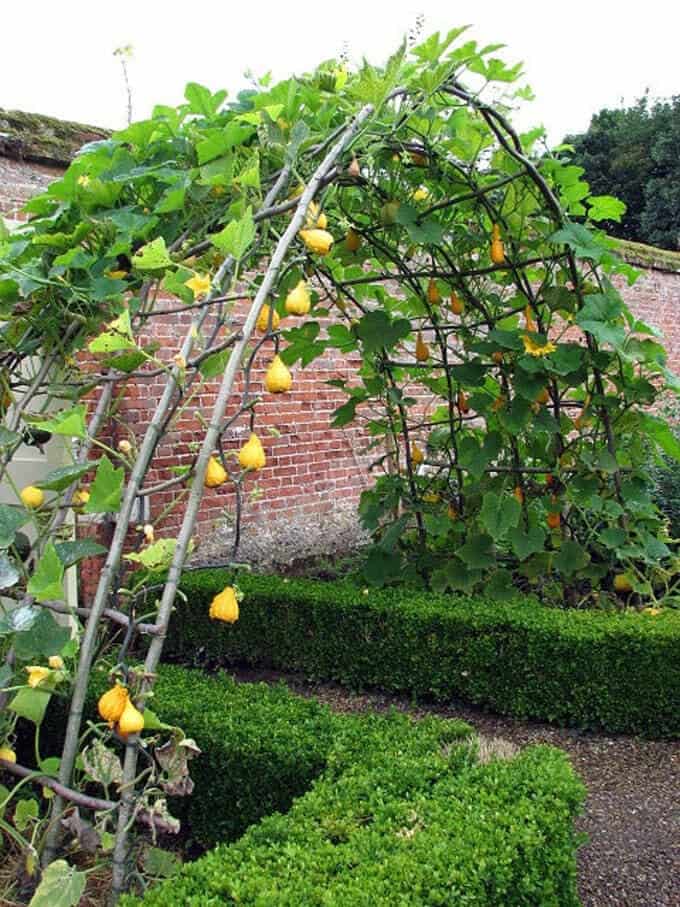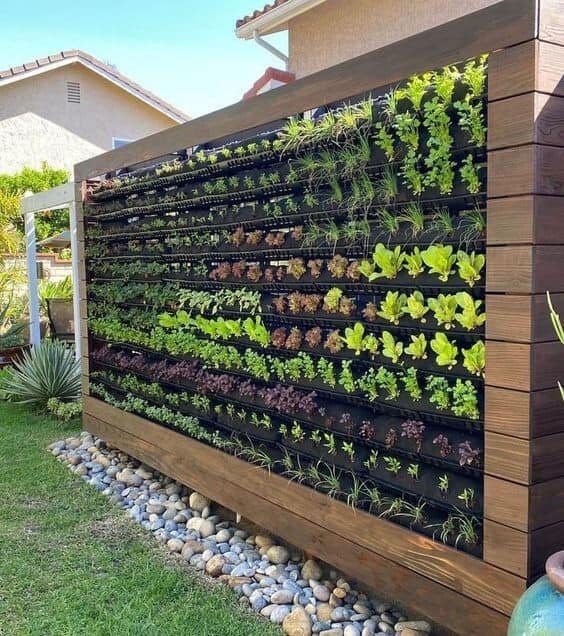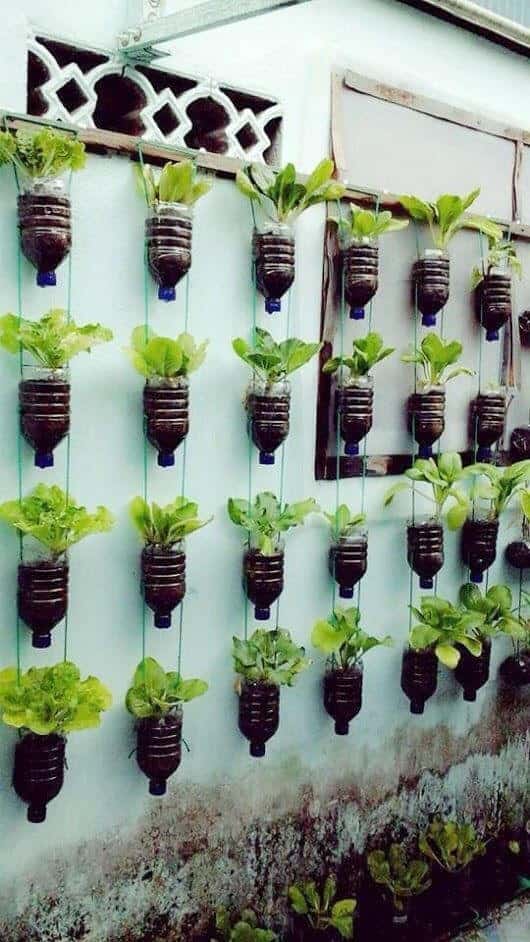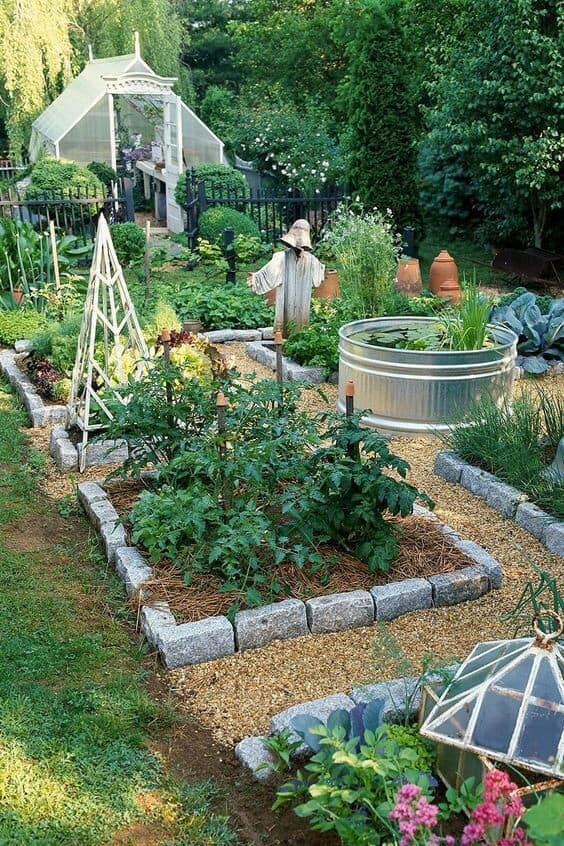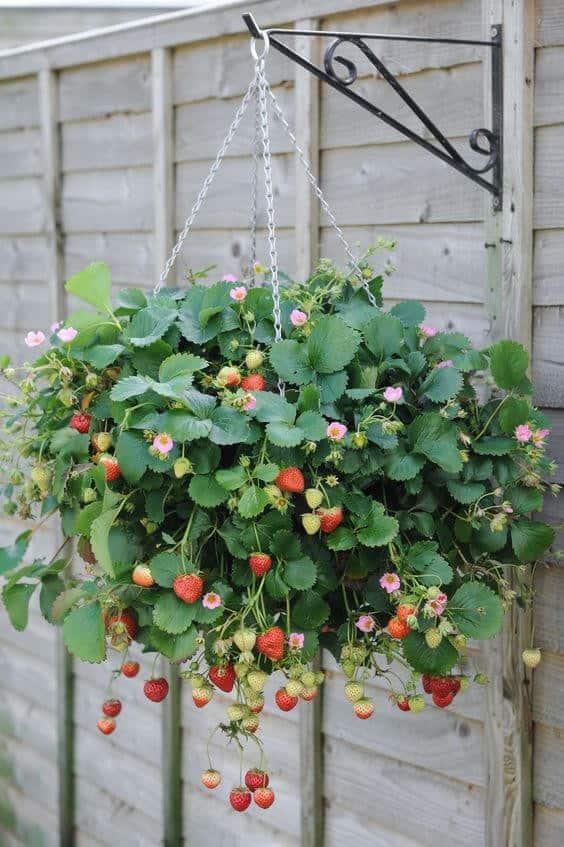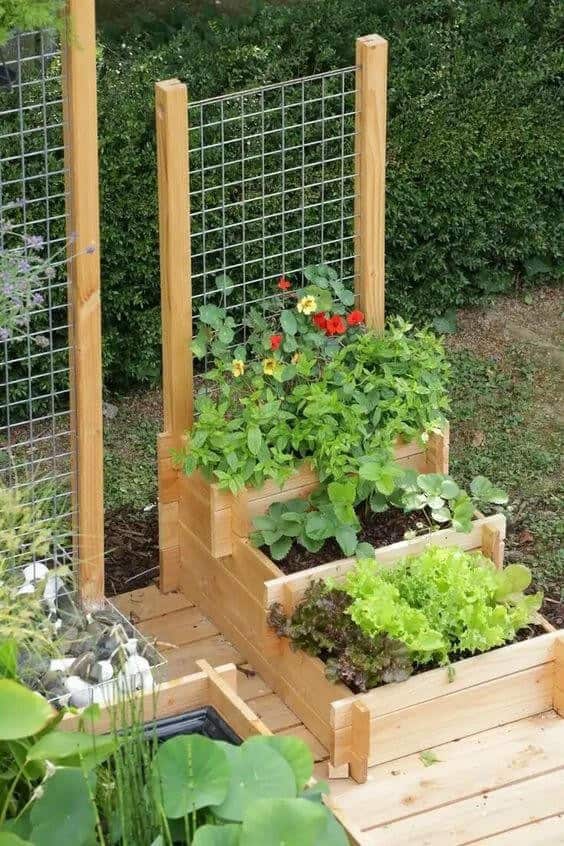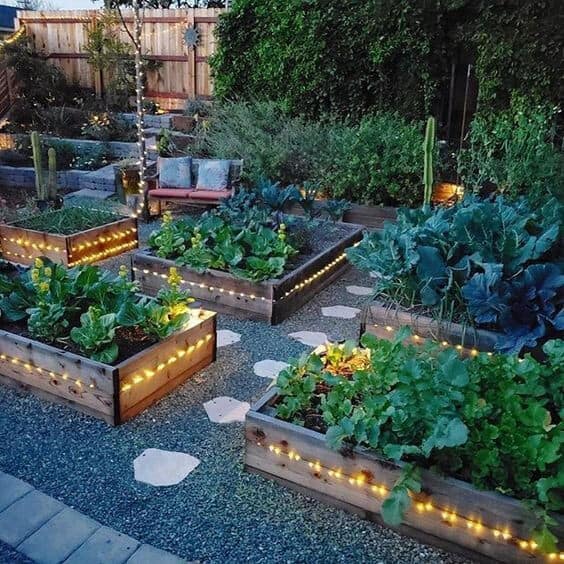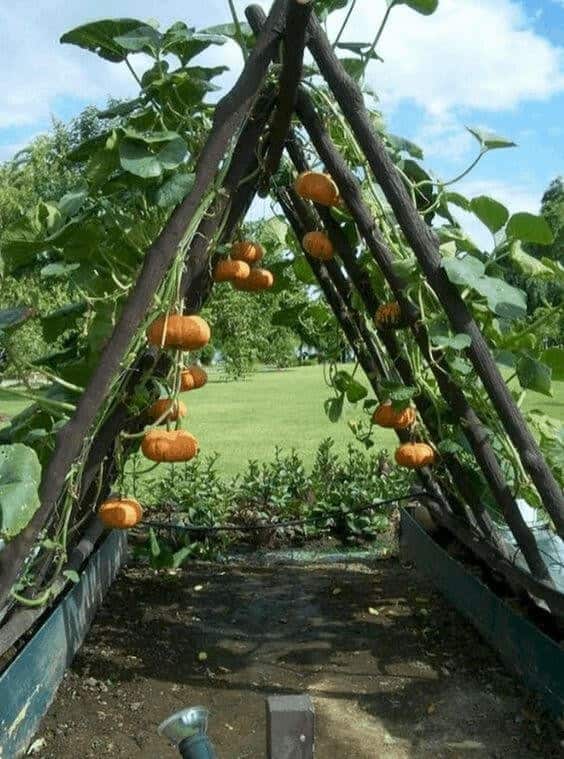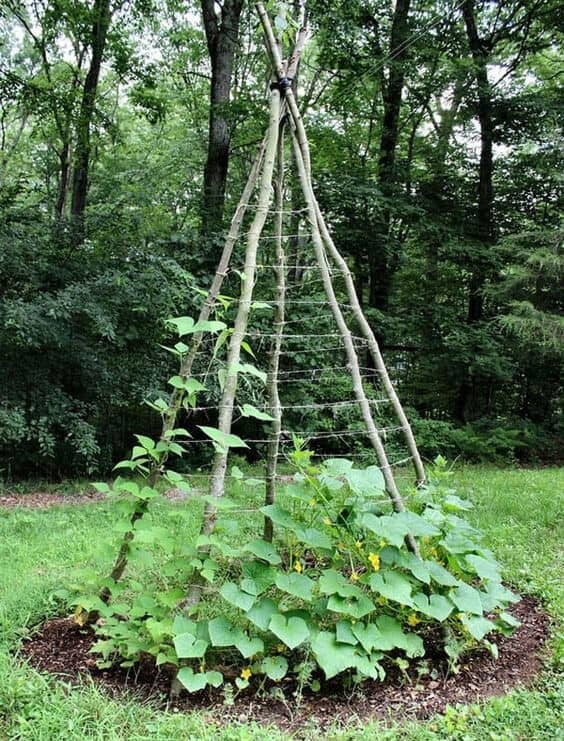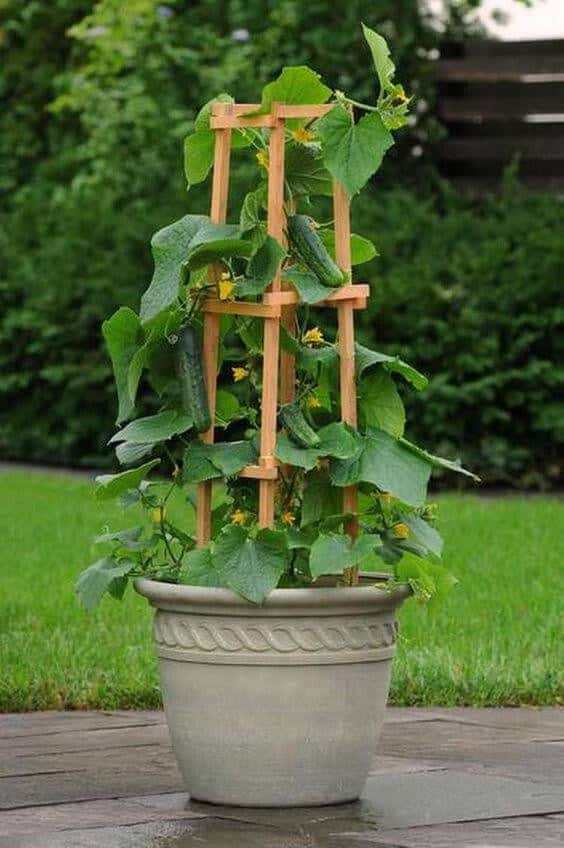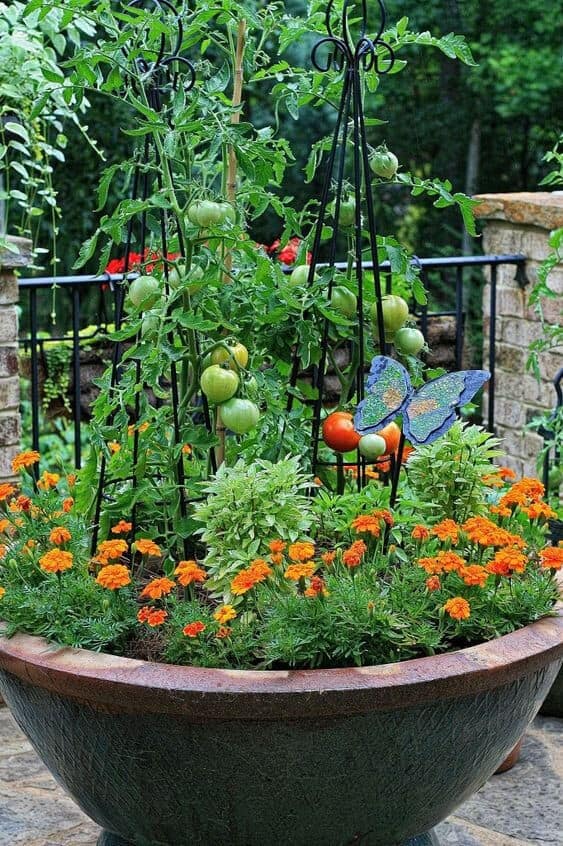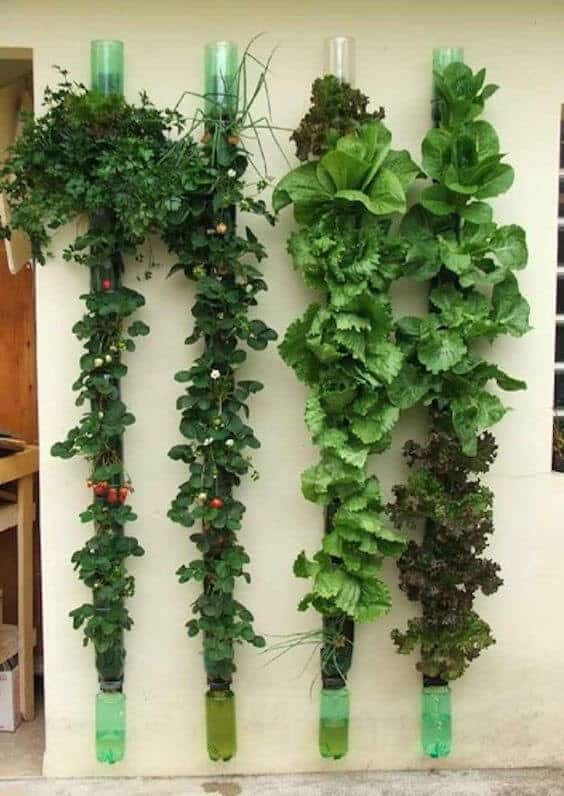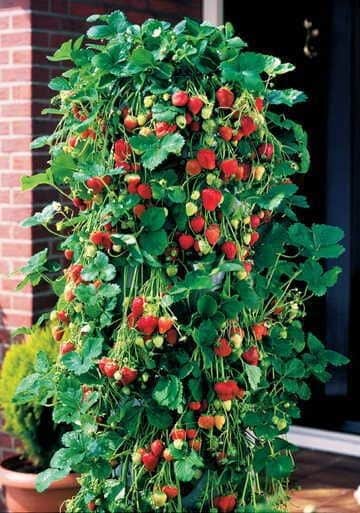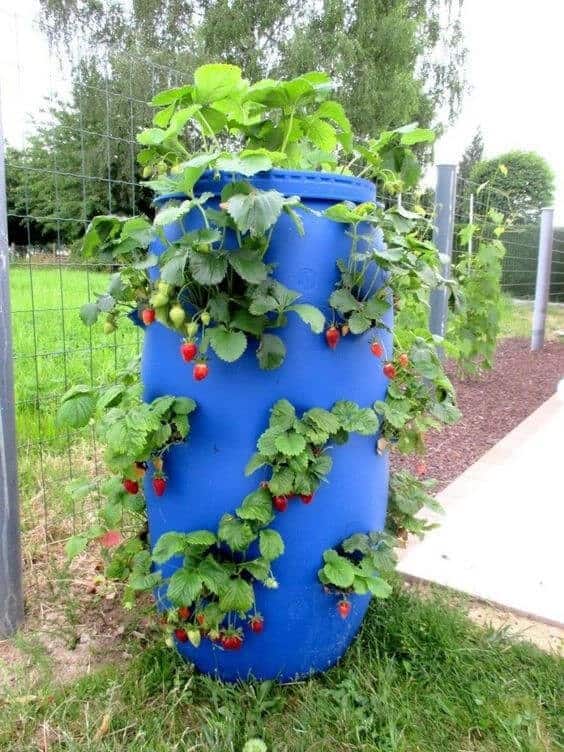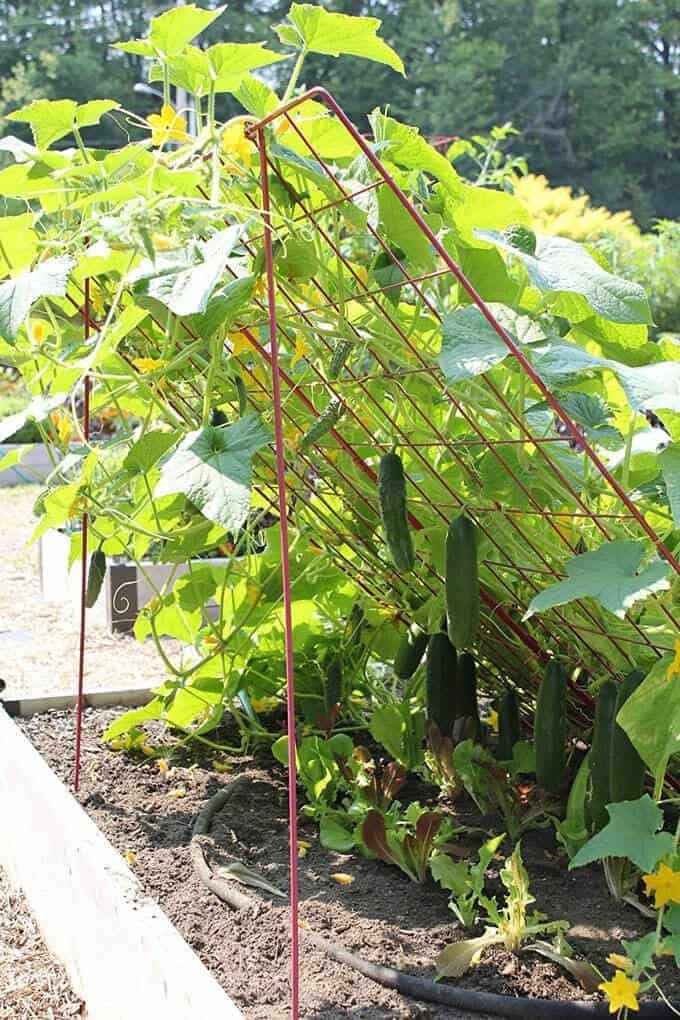The modern trend of cultivating a vegetable garden at home has gained immense popularity. Not only does it provide access to fresh and healthy organic produce, but it also offers an effortless way to trim down grocery bills. While the ideal terrain for gardening may be lacking, various planning strategies can transform your space into a thriving oasis that doubles as a stunning visual feature.
In this article, we’ll delve into 20 uncomplicated gardening layouts you can effortlessly incorporate into your vegetable garden, ensuring maximum yield and captivating beauty.
Try Companion Planting
When it comes to cultivating a thriving vegetable garden, incorporating a diverse range of plants is crucial. This approach not only enhances the overall aesthetic appeal of your outdoor space but also fosters a healthier and more resilient ecosystem.
By thoughtfully selecting companion plants that share similar growing conditions, you can create a harmonious balance between different vegetables, ultimately broadening your culinary horizons and reaping numerous benefits for both you and your garden.
Construct Some Raised Beds
Raised bed gardens have always been a top choice of mine. Their compact design makes them easy to maintain, and their ability to improve poor soil quality is an added bonus. Additionally, raised beds warm up faster and recover more quickly from cold snaps compared to traditional in-ground gardening methods. To take it to the next level, this setup incorporates separate beds with trellises for supporting climbing plants.
When building raised garden beds using wood, it’s crucial to select untreated materials that won’t contaminate the soil and harm your plants.
Grow Vegetables on a Trellis
Maximizing space in a limited garden can be a challenge, but utilizing trellises is an innovative solution that not only provides more room for plants to grow but also adds a touch of timeless elegance to your outdoor space. By incorporating vertical gardening techniques, you can effectively increase the overall garden area while maintaining a compact footprint.
As evident in this vegetable garden, cleverly using trellises allows for efficient use of space and creates a visually appealing display.
Repurpose Some Stock Tanks
Stock tanks, with their unyielding durability, can be repurposed in various ways, making them an ideal choice for raised garden beds. Their height is precisely suited for comfortable access, which is particularly beneficial for individuals experiencing back issues. The concept of incorporating a trellis and decorative lights takes the traditional raised bed to new heights.
When constructing a stock tank, it’s essential to include sufficient drainage holes to prevent waterlogging and ensure a healthy growing environment.
Try Some Wire Mesh
When it comes to supporting vining or climbing vegetables in your garden, trellises are an excellent option. But, if you’re planning to grow multiple plants that require this type of support, a wire mesh may be the better choice. By utilizing a wire mesh, you can create a space-efficient and effective solution for your vegetable garden design.
The larger surface area of the mesh allows it to support several plants at once, making it an ideal solution for gardeners who want to maximize their growing space.
Try a Natural Look
As the importance of sustainability continues to grow, cultivating an entirely natural garden can be a fantastic way to contribute to this crucial movement. This holistic approach not only benefits the environment but also adds a unique charm to your outdoor space. The lush trellis supporting the vine in this example vegetable garden is itself a living, breathing structure that embodies the all-natural aesthetic.
To further enhance the organic feel, consider utilizing an edging tool to create a clean and defined border, particularly when working with immaculately manicured lawns like the one showcased here.
Try a Vertical Garden
When it comes to dealing with pest issues, incorporating a vertical garden into your space can be a game-changer. These efficient designs are perfect for small areas, making them an ideal solution for urban dwellers or those with limited outdoor space. To create your own unique vertical garden, consider repurposing materials like gutters or pipes, which can be transformed into functional planters.
Just be sure to incorporate adequate drainage holes at the bottom of each container or pipe to prevent waterlogged soil and root rot. When selecting plants for your vertical garden, focus on shallow-rooted varieties such as thyme, kale, or leafy lettuce, which tend to thrive in these conditions.
Hang Some Bottles
While hanging bottles and baskets are often associated with flowering plants, they can also be used to cultivate vegetables. This versatility makes them an attractive option for gardeners who want to make the most of their outdoor spaces. One of the key benefits of using hanging containers is that they can be placed almost anywhere, from balconies to backyards, without requiring a significant amount of room.
Adorn with Greenhouse Flair
If you’re seeking a consistent supply of fresh vegetables throughout the year, consider utilizing a greenhouse to cultivate your own produce. These structures provide a protected environment that allows plants to thrive even during harsh winter months when outdoor conditions are unfavorable. By integrating a greenhouse with an outdoor vegetable garden, you can create a harmonious balance between the two, ensuring a continuous harvest regardless of the season.
Hanging Basket
For novice gardeners, a hanging basket can serve as an ideal starting point for cultivating vegetables or fruits. By focusing on a single basket, you can develop your plant care skills without feeling overwhelmed by a larger garden. In this example, we’re using a strawberry shrub to demonstrate the potential of a solitary hanging basket. As you gain confidence and experience, you can easily expand to multiple plants and baskets, or stick with just one for a low-maintenance option.
Tiered Raised Vegetable Garden
While raised gardens may offer convenience, they often come with limited space constraints. To overcome this limitation, consider creating a tiered raised vegetable garden. This innovative design not only expands the surface area but also elevates the garden’s visual appeal through its unique architecture. The topmost level features a trellis, providing support for climbing plants to thrive.
Light Up Your Potager Garden
Consider elevating your outdoor landscape by incorporating a garden rather than just focusing on basic landscaping. A potager garden, in particular, can be a game-changer as it not only keeps the surrounding space tidy but also discourages weed growth. The design concept I’m referring to is one where raised beds are incorporated into the potager garden, and then brought to life with strategic lighting that adds ambiance and visual appeal.
This functional yet beautiful garden design also doubles as an inviting outdoor sitting area, perfect for relaxation or social gatherings.
A Pumpkin Haven
In constructing a trellis for your plants, it’s crucial that the structure can withstand the weight of the produce and provide sufficient support to the plants themselves. A robust trellis not only safeguards against pest and disease damage but also serves as a reliable barrier against inclement weather conditions, such as torrential rains. The sturdy framework ensures pumpkin fruits remain lifted above ground level, minimizing the risk of damage from pest invasions or severe weather events.
Landscaping with a Trellis
While many people may associate gardens with neat and tidy lawns, it’s possible to create a visually appealing landscape without sacrificing curb appeal. One way to do this is by incorporating trellises into your landscaping design. These structures can provide the perfect framework for climbing plants to thrive, resulting in an organic and harmonious blend of foliage and architecture.
As the plant grows and climbs, its natural curves and tendrils will follow the outline of the trellis, creating a unique and dynamic display that complements the surrounding lawn.
One Pot Design
When cultivating a specific crop, it’s not uncommon to dedicate an entire garden or even a single pot to its growth. A prime illustration of this approach is a pickle-growing setup. To optimize the environment for these plants, a support structure has been integrated into the pot, thereby promoting healthy development and increased yield.
Add Some Flowers
Transforming your garden into a stunning oasis is just a bouquet of creativity away. By incorporating a variety of flowers, you can effortlessly inject visual interest, making it a true showstopper. But that’s not all – certain scented blooms possess the remarkable ability to repel pests, resulting in a healthier and more bountiful harvest.
This clever potted garden design exemplifies this concept perfectly, showcasing how surrounding plants with vibrant flowers not only adds beauty but also serves as a captivating landscaping feature.
Column Vertical Garden
One creative approach to building a vertical garden involves utilizing bottles to create a columnar structure. This innovative method is particularly well-suited for hydroponic gardening, allowing for the efficient use of resources like water and fertilizers. A significant advantage of this design lies in its ability to conserve these essential inputs, making it an attractive option for those seeking to cultivate their own produce while minimizing environmental impact.
Go for Unconventional Planters
While traditional gardening designs can be effective, sometimes taking an unconventional approach can lead to even more impressive results. The key is to think outside the box and get creative with your vegetable garden’s layout. This might involve using unexpected materials like Tupperware containers, planting bags, or raised gardens. For instance, a strawberry patch can thrive in hanging containers – just be sure to include drainage holes to prevent waterlogged soil.
With a little imagination, you can create a unique and thriving vegetable garden that stands out from the crowd.
Use a Garden Drum
Drums can be surprisingly versatile when it comes to gardening. Their unique shape allows them to serve as portable gardens, offering a significant surface area for cultivating a variety of plants. The cylindrical design also enables easy watering and fertilization, making the overall care process for your vegetables much simpler. This innovative approach not only provides a creative outlet but also helps you grow fresh produce with minimal effort.
Go for a Multipurpose Trellis
A trellis’ primary function is to provide structural support for climbing plants, but it can also offer an added layer of protection by providing shade for more delicate flora. In this symbiotic design, the trellis serves as a foundation for the climbers to wrap themselves around, while simultaneously shielding the plants below from harsh sunlight. This clever arrangement effectively kills two birds with one stone, showcasing the versatility and practicality of using trellises in your garden.
